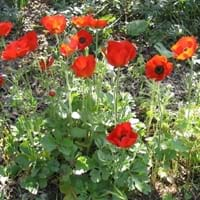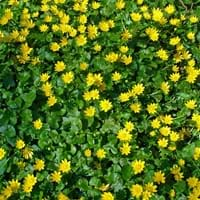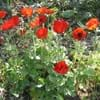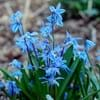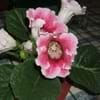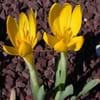Life Span
Perennial
Perennial
Type
Bulb or Corm or Tuber
Bulb or Corm or Tuber
Origin
Eastern Europe, Northern Africa, Western Asia
Europe, Russia/Siberia, Northern Africa, Western Asia
Types
tecolate strain
buttercup
Habitat
Lawn, Temperate Regions
meadows, Shady Edge, Woodland Garden Dappled Shade
USDA Hardiness Zone
7-11
Not Available
Habit
Upright/Erect
Clump-Forming
Flower Color
White, Yellow, Red, Purple, Orange, Pink
White, Yellow, Red, Green
Flower Color Modifier
Bicolor
Bicolor
Fruit Color
Not Available
Not Available
Leaf Color in Spring
Blue Green
Not Available
Leaf Color in Summer
Light Green
Light Green
Leaf Color in Fall
Several shades of Green
Several shades of Green
Leaf Color in Winter
Light Green
Light Green
Leaf Shape
Palmate
Heart-shaped
Plant Season
Spring, Summer
Spring
Sunlight
Full Sun
Partial Sun, Partial shade
Type of Soil
Loam, Sand
Loam, Sand
The pH of Soil
Acidic, Neutral, Alkaline
Acidic, Neutral
Soil Drainage
Well drained
Well drained
Bloom Time
Late Spring, Early Summer
Not Available
Tolerances
Drought
Drought
Where to Plant?
Container, Ground, Pot
Container, Ground
How to Plant?
From bulbs, Seedlings, Transplanting, Vegetative Reproduction
Divison, reseeds
Plant Maintenance
Medium
Medium
Watering Requirements
Keep the Soil well drained, Requires plenty of water during the growing season
Average Water Needs
In Summer
Lots of watering
Lots of watering
In Spring
Moderate
Moderate
In Winter
Average Water
Average Water
Soil pH
Acidic, Neutral, Alkaline
Acidic, Neutral
Soil Type
Loam, Sand
Loam, Sand
Soil Drainage Capacity
Well drained
Well drained
Sun Exposure
Full Sun
Partial Sun, Partial shade
Pruning
Remove damaged leaves, Remove dead branches, Remove dead leaves
Remove damaged leaves, Remove dead branches, Remove dead leaves
Fertilizers
All-Purpose Liquid Fertilizer
All-Purpose Liquid Fertilizer
Pests and Diseases
Not Available
Red blotch
Plant Tolerance
Drought
Drought
Flower Petal Number
Single, Double, Semi-Double
Not Available
Foliage Texture
Medium
Not Available
Foliage Sheen
Matte
Not Available
Attracts
Insects, pollinators
Ants, Insects
Allergy
Skin irritation
Not Available
Aesthetic Uses
along a porch, deck or patio, Bouquets, Cut Flowers, Hanging Basket
Showy Purposes
Beauty Benefits
Not Available
Not Available
Environmental Uses
Air purification
Air purification
Medicinal Uses
Not Available
Antirheumatic, Astringent, Vitamin C
Part of Plant Used
Flowers
Leaves, Root
Other Uses
Basketary, deer resistant, Used as Ornamental plant
Cleanser
Used As Indoor Plant
No
Not Available
Used As Outdoor Plant
Yes
Yes
Garden Design
Bedding Plant, Container, Cutflower, Mixed Border
Mixed Border, Wildflower
Botanical Name
RANUNCULUS asiaticus
Ranunculus ficaria
Common Name
Garden Ranunculus, Persian Buttercup
Figwort, Lesser Celandine
In Hindi
Persian Buttercup
Lesser Celandine
In German
Asiatischer Hahnenfuß
Scharbockskraut
In French
Renoncule des fleuristes
Ficaire
In Spanish
Persian Buttercup
celidonia menor
In Greek
Persian Buttercup
Lesser Celandine
In Portuguese
ranúnculo
Lesser Celandine
In Polish
Jaskier azjatycki
Ziarnopłon wiosenny
In Latin
Persian Buttercup
Pavasara mazpurenīte
Phylum
Vascular plant
Magnoliophyta
Class
Not Available
Magnoliopsida
Order
Ranunculales
Ranunculales
Family
Ranunculaceae
Ranunculaceae
Clade
Angiosperms, Eudicots
Angiosperms, Eudicots
Tribe
Ranunculeae
Not Available
Subfamily
Unknown
Not Available
Properties of Persian Buttercup and Lesser Celandine
Wondering what are the properties of Persian Buttercup and Lesser Celandine? We provide you with everything About Persian Buttercup and Lesser Celandine. Persian Buttercup doesn't have thorns and Lesser Celandine doesn't have thorns. Also Persian Buttercup does not have fragrant flowers. Persian Buttercup has allergic reactions like Skin irritation and Lesser Celandine has allergic reactions like Skin irritation. Compare all the properties and characteristics of these two plants. Find out which of these plant can be used as indoor plant. If you are interested to decorate your house and garden, find out aesthetic uses, compare them and select the plant which will beautify your surrounding. Along with beautification, try comparing medicinal and edible uses of Persian Buttercup and Lesser Celandine and you can choose the plant having best and most benefits.
Season and Care of Persian Buttercup and Lesser Celandine
Season and care of Persian Buttercup and Lesser Celandine is important to know. While considering everything about Persian Buttercup and Lesser Celandine Care, growing season is an essential factor. Persian Buttercup season is Spring and Summer and Lesser Celandine season is Spring and Summer. The type of soil for Persian Buttercup is Loam, Sand and for Lesser Celandine is Loam, Sand while the PH of soil for Persian Buttercup is Acidic, Neutral, Alkaline and for Lesser Celandine is Acidic, Neutral.
Persian Buttercup and Lesser Celandine Physical Information
Persian Buttercup and Lesser Celandine physical information is very important for comparison. Persian Buttercup height is 25.40 cm and width 10.20 cm whereas Lesser Celandine height is 5.10 cm and width 10.20 cm. The color specification of Persian Buttercup and Lesser Celandine are as follows:
Persian Buttercup flower color: White, Yellow, Red, Purple, Orange and Pink
Persian Buttercup leaf color: Blue Green
Lesser Celandine flower color: White, Yellow, Red and Green
- Lesser Celandine leaf color: Not Available
Care of Persian Buttercup and Lesser Celandine
Care of Persian Buttercup and Lesser Celandine include pruning, fertilizers, watering etc. Persian Buttercup pruning is done Remove damaged leaves, Remove dead branches and Remove dead leaves and Lesser Celandine pruning is done Remove damaged leaves, Remove dead branches and Remove dead leaves. In summer Persian Buttercup needs Lots of watering and in winter, it needs Average Water. Whereas, in summer Lesser Celandine needs Lots of watering and in winter, it needs Average Water.
